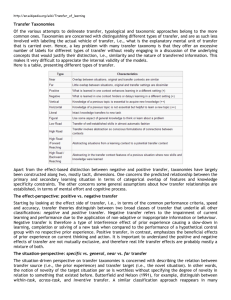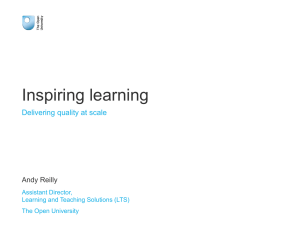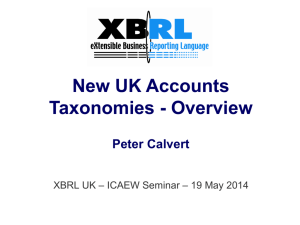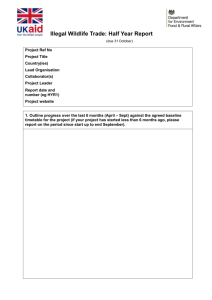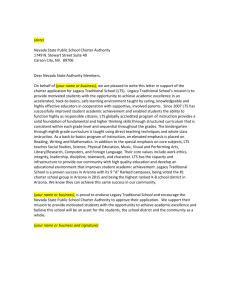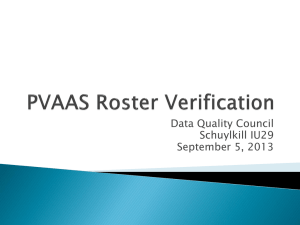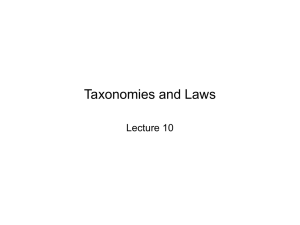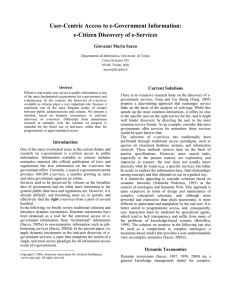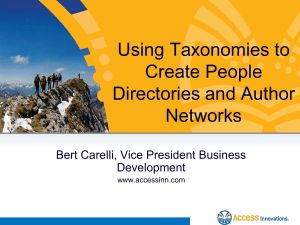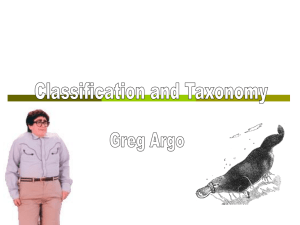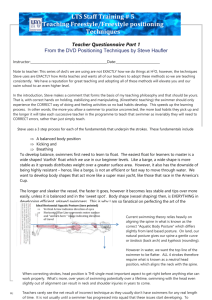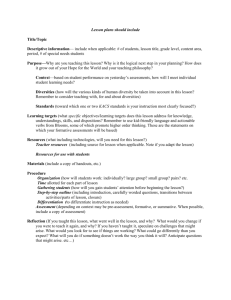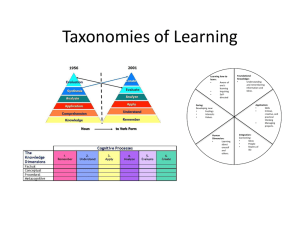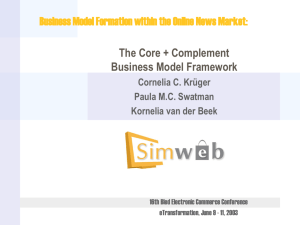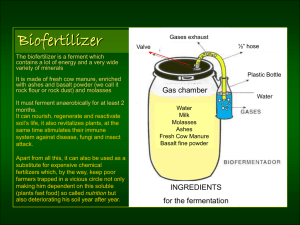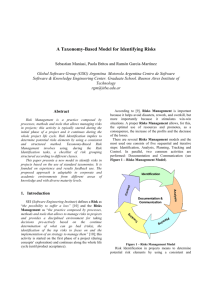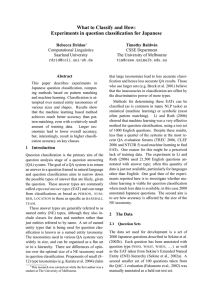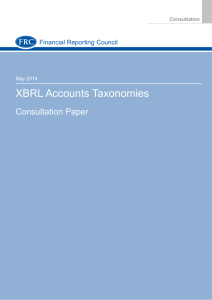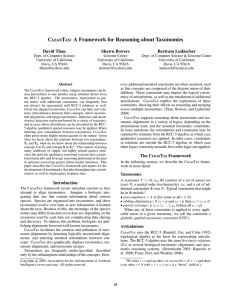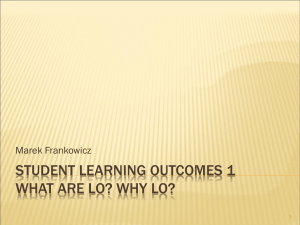Classroom Assessment
advertisement
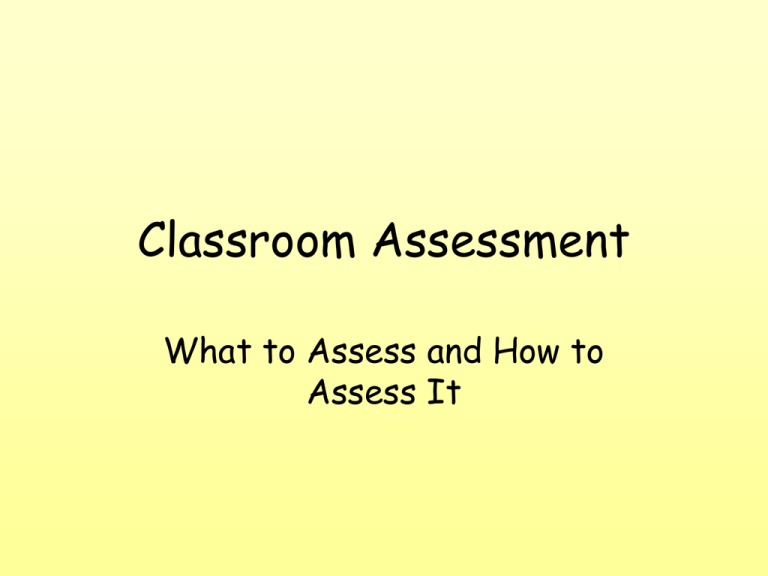
Classroom Assessment What to Assess and How to Assess It Learning Targets LTs define academic success. They define what students should know and be able to do. They should be clearly stated and transparent to all. Different readers (i.e., teachers) should interpret statements of LTs the same way. They should be written in kid-friendly language. Learning Targets are Specific Not specific: The student will understand the concepts and procedures of mathematics. More specific: The student will understand and apply concepts and procedures of mathematics. Better yet: The student will understand and apply concepts and procedures from number sense. Why Specific Learning Targets? Help teachers make their educational goals explicit. Communicate the intent of instruction to students, parents, other teachers, and administrators. Describe specific performances against which teachers can evaluate the success of instruction. Communicate to students what they are expected to learn. Learning Targets Identify What is Important Targets center on what is truly important. – Not just from our perspective, but – from the perspective of professionals in the field of study. LT Clarify the PURPOSE of Assessment • Determine beforehand what inferences you want to draw from students’ performance on an assessment. – Diagnostic information? – Formative evaluation? – Summative evaluation? • Decide how poor performance on the assessment will be interpreted; how good performance will be interpreted. Three General Types of Learning Targets 1. Cognitive Learning Targets (Achievement). 2. Affective Learning Targets (Dispositions) 3. Psychomotor Learning targets (Motor Skills). Goals vs Learning Targets Educational goals are stated in broad terms. Used for planning overall educational activities. Typically are organized by subject area. Provide a curriculum framework. Not specific enough to serve as learning targets. Evaluationg Learning Targets (LTs) (Nitko, 1996) Are the LTs appropriate for the educational level of the students? Do the LTs identify the important outcomes for the sequence of instruction? Can the LTs be defended by currently accepted principals of learning? Are the resources available to teach to the LTs? Specifying Learning Targets • Learning targets define academic success. – Define what students should know and be able to do. – Need to be CLEARLY stated: • So that different teachers can understand them. • So that students will understand what is expected of them. • See Verbs for Defining Learning Targets in the Exhibits Section of the Web Site Finally, Learning Targets Should… • be broad enough so that instruction can be organized around them, • be measurable, and • identify a more global outcome that encompass several more specific learning objectives. Taxonomies for Learning and Taxonomies for Teaching Some taxonomies of learning targets (e.g., Bloom) are useful for classifying different types of learning outcomes. Other taxonomies (e.g., Marzano) are intended to provide a framework for teaching. It is important to realize that some learning targets might fall into more than one category. This is especially true of complex learning targets. Using Taxonomies to Identify Learning Targets Using a taxonomy of learning targets helps focus attention on higher-level outcomes. Several taxonomies have been presented in the instructional literature (See, for example, several of the examples given under *Classroom Assessment Links on the Web on my website. Take a few minutes to browse the web for other examples of learning target taxonomies. Criteria for Choosing Learning Outcome Taxonomies (Nitko, 1996) Completeness: Can your important learning targets be classified within the taxonomy? Point of view: Does the taxonomy help you explain your teaching methods to others? Simplicity: Is the taxonomy easily understood by your target audiences? Reporting: Is the taxonomy useful for organizing assessment results in ways that are meaningful to target audiences? Match Assessments to Learning Targets “A…basic requirement of the validity of classroom assessment procedures is that the procedures…match the intentions of the specific learning targets that you include in your assessment plan.” (Nitko, 1996; p. 32). An Example for Writing The student will write clearly and effectively. To meet this learning target the student will: • Develop a topic or theme; organize written thoughts with a clear beginning, middle, and end; use transitional sentences and phrases to connect related ideas; and write coherently and effectively. Continued on next slide An Example for Writing • Additionally, the student will use a style appropriate to the intended audience and purpose; and • Use proper voice, word choice, and sentence fluency for the selected style and audience. • In addition… Continued on next slide An Example for Writing • The student will apply acceptable writing conventions. He or she will: – Know and apply correct spelling, grammar, sentence structure, punctuation, and capitalization – Know and apply specified formatting, including margins, headings, and size of font. An Example for Science The student will understand and use scientific concepts and principles. To achieve this learning target, the student will: • Use properties to identify, describe, and categorize substances, materials, and objects. • Use characteristics to categorize living things. Continued on next Slide An Example for Science • Recognize the components, structure, and organization of various systems and the interconnections within and among them. • Understand and be able to articulate how interactions within and among systems cause changes in matter and energy. End

